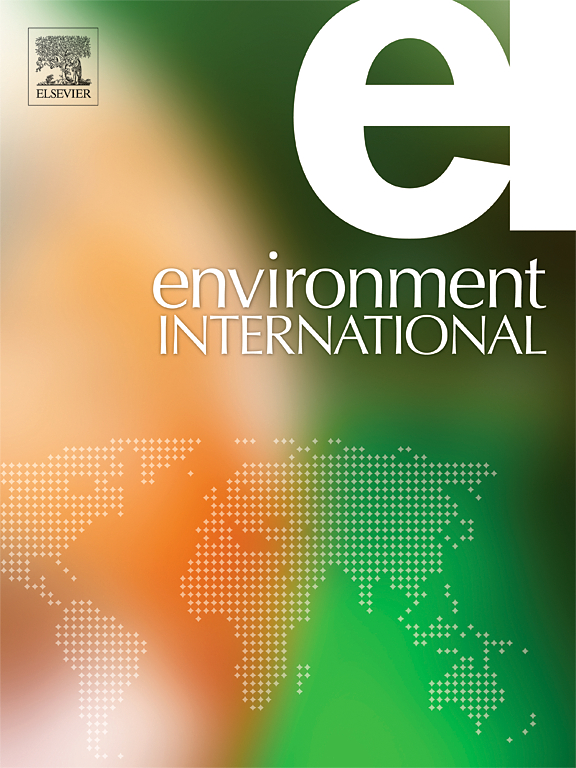A new mechanism involved in cardiovascular senescence induced by environmentally relevant dose of 16 priority-controlled PAHs
IF 10.3
1区 环境科学与生态学
Q1 ENVIRONMENTAL SCIENCES
引用次数: 0
Abstract
Polycyclic aromatic hydrocarbons (PAHs) are closely related to the occurrence of cardiovascular diseases, nevertheless the toxicological mechanism remains ambiguous. To verify whether PAHs exposure leads to cardiovascular senescence, 8-week-old male sprague–dawley rats and primary human umbilical vein endothelial cells were exposed to different concentrations of 16 priority-controlled PAHs for 90 d and 48 h respectively. In in vitro study, PAHs exposure promoted aryl hydrocarbon receptor (AhR) activation, and then directly or indirectly inhibited SIRT6 expression leading to telomere dysfunction, which further caused DNA damage and subsequently promoted endothelial cells senescence. But the treatment of CH-223191 (an AhR inhibitor) rescued the aging phenotypes induced by PAHs, suggesting that AhR plays an important role in PAHs-induced endothelial cells senescence. In in vivo study, PAHs exposure raised AhR expression, affected SIRT6-related aging signaling pathway, and induced myocardial and vascular remodeling in rats. Molecular dynamics simulations demonstrated that, in addition to benzo[a]pyrene-7,8-diol-9,10-epoxide (the mediate metabolite of benzo[a]pyrene), typical parent PAHs (phenanthrene, benzo[a]pyrene) can directly bind to known DNA strand binding sites of SIRT6 through hydrophobic force, which was further validated by electrophoretic mobility shift assay. All above indicates for the first time that in addition to classical AhR dependent pathway, parent PAHs may affect DNA damage response and telomere maintenance function of SIRT6, which is a new mechanism of PAHs induced cardiovascular senescence.


求助全文
约1分钟内获得全文
求助全文
来源期刊

Environment International
环境科学-环境科学
CiteScore
21.90
自引率
3.40%
发文量
734
审稿时长
2.8 months
期刊介绍:
Environmental Health publishes manuscripts focusing on critical aspects of environmental and occupational medicine, including studies in toxicology and epidemiology, to illuminate the human health implications of exposure to environmental hazards. The journal adopts an open-access model and practices open peer review.
It caters to scientists and practitioners across all environmental science domains, directly or indirectly impacting human health and well-being. With a commitment to enhancing the prevention of environmentally-related health risks, Environmental Health serves as a public health journal for the community and scientists engaged in matters of public health significance concerning the environment.
 求助内容:
求助内容: 应助结果提醒方式:
应助结果提醒方式:


